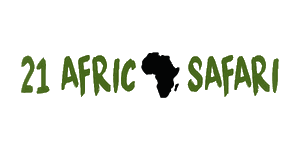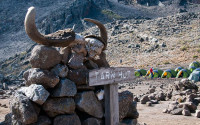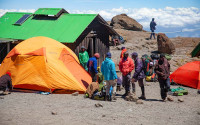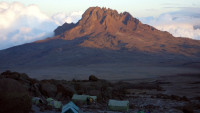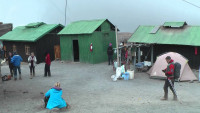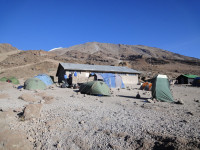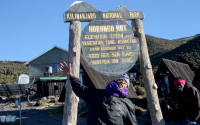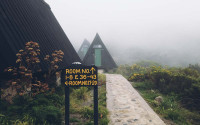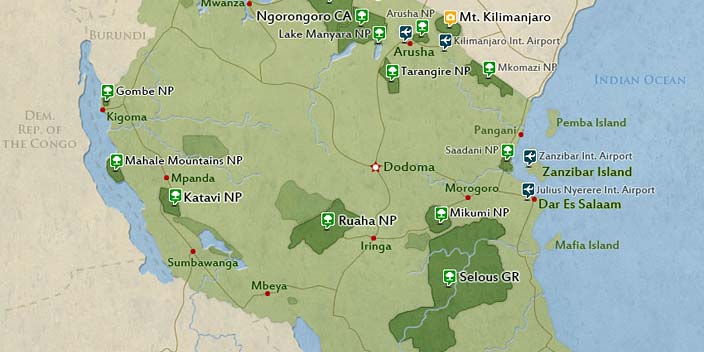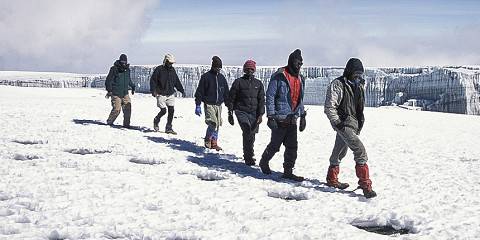
$1,670 pp (USD)
2 travelers on Start dateArrival
Arrival

Day 1
Moshi - Rongai Start Point (1996m) – Simba Camp (2626m)
Moshi - Rongai Start Point (1996m) – Simba Camp (2626m)
Your Kilimanjaro adventure begins with an early morning departure from Moshi town, driving approximately 2 hours to Naro Moru, a small settlement on the northeastern slopes of Mount Kilimanjaro. From there, the journey continues for about 68 kilometers (approximately 2.5 hours) on rough, unpaved roads until you reach the Rongai Gate (Nale Moru) at an altitude of 1,996 meters.
At the gate, you’ll meet your mountain guide and porters who will be your support team throughout the trek. After a short briefing and equipment check, your hike begins through Nale Moru village, following a small, winding trail that passes through local maize and potato fields. The trail gradually enters a beautiful pine forest, offering occasional glimpses of wildlife and birds.
After 3–4 hours of hiking, you will arrive at Simba Camp, located at an altitude of 2,626 meters on the edge of the moorland zone.
Elevation: 1,996m to 2,626m
Hiking Time: 3–4 hours
Habitat: Montane Forest.
- Main Destination:
- Mount Kilimanjaro
- Accommodation:
- Budget camping
- Meals & Drinks:

Day 2
Simba Camp ( 2626 m ) – Second Cave Camp ( 3450 m )
Simba Camp ( 2626 m ) – Second Cave Camp ( 3450 m )
After an early breakfast at Simba Camp, you’ll begin your second day on the mountain with a steady ascent towards the Second Cave Camp. Today’s trek is relatively short, taking approximately 3 to 4 hours, which gives your body a good chance to continue acclimatizing to the altitude.
The trail leaves the forest behind and enters the moorland zone, where vegetation shifts to include heather, giant lobelias, and other alpine plants. The air becomes drier and the views begin to open up dramatically. On clear days, you’ll be treated to stunning vistas of Kenya's plains to the north and Kibo’s snowy peak straight ahead.
Dinner is served early, and you’ll have time to relax, enjoy the stars, and get a good night’s sleep in preparation for a longer trek the next day.
Elevation Gain: +824 meters
Hiking Time: 3–4 hours
Habitat: Moorland.
- Main Destination:
- Mount Kilimanjaro
- Accommodation:
- Budget camping
- Meals & Drinks:

Day 3
Second Cave Camp (3450m) – Kikelewa Camp (3600m)
Second Cave Camp (3450m) – Kikelewa Camp (3600m)
After breakfast at Second Cave Camp, your trek continues with a gentle but steady ascent heading southeast across the moorland. The scenery becomes increasingly rugged and open, with fewer trees and more alpine vegetation, including Senecio and giant groundsel dotting the landscape.
Although the elevation gain is modest—just 150 meters—this stretch is important for gradual acclimatization, allowing your body to adjust to the altitude while continuing to make progress toward the summit.
Along the trail, you'll enjoy excellent views of Mawenzi Peak, Kilimanjaro’s jagged secondary summit. This dramatic peak creates a striking contrast against the rolling landscape of the moorland and signals that you’re getting closer to the heart of the mountain.
After about 3 to 4 hours of trekking, you will reach Kikelewa Camp, located in a sheltered valley surrounded by towering cliffs and highland vegetation. The camp is more remote and less frequented, offering a sense of solitude and calmness.
- Main Destination:
- Mount Kilimanjaro
- Accommodation:
- Budget camping
- Meals & Drinks:

Day 4
Kikelewa Camp (3600m) – Mawenzi Tarn Camp (4330m)
Kikelewa Camp (3600m) – Mawenzi Tarn Camp (4330m)
After an early breakfast at Kikelewa Camp, you’ll begin one of the most scenic and rewarding sections of the Rongai Route. The trail starts with a short but steep climb up grassy slopes, quickly gaining elevation as you leave the moorland behind and enter the alpine desert zone. The vegetation becomes sparse, and the air thinner, but the views become increasingly dramatic.
As you ascend, the towering spires of Mawenzi Peak dominate the landscape, providing an incredible backdrop for the hike. This is one of the most visually striking parts of the entire trek, with sweeping views back down the trail and across the saddle toward Kibo Peak.
After about 3–4 hours of hiking, you’ll arrive at Mawenzi Tarn Camp, nestled beneath the imposing Mawenzi cliffs beside a small glacial tarn (mountain lake). At 4,330 meters, this is one of the most picturesque campsites on Kilimanjaro.
Elevation Gain: +730 meters
Hiking Time: 3–4 hours
Habitat: Alpine Desert.

Day 5
Mawenzi Tarn Camp (4330m) – Kibo Hut (4700m)
Mawenzi Tarn Camp (4330m) – Kibo Hut (4700m)
After a warm breakfast at Mawenzi Tarn Camp, you’ll pack up and begin your journey toward the base of Kilimanjaro’s main summit, Uhuru Peak. Today’s trek crosses the high-altitude Saddle, a barren, windswept plain that stretches between the rugged spires of Mawenzi Peak and the massive, snow-capped dome of Kibo.
The trail is wide and gradual, but the environment becomes increasingly harsh and dry, with minimal vegetation and thin mountain air. The terrain is stark and moonlike—an unforgettable part of the climb. You may feel the effects of the altitude more strongly today, so it's important to pace yourself, drink plenty of water, and avoid overexertion.
This is your base camp before the final push to the summit.
You’ll arrive in the early afternoon, giving you time to rest, eat an early dinner, and prepare your gear for the summit attempt. Around midnight.
Elevation Gain: +370 meters
Hiking Time: 4–5 hours
Habitat: Alpine Desert.
- Main Destination:
- Mount Kilimanjaro
- Accommodation:
- Kibo Hut
- Meals & Drinks:

Day 6
Kibo Hut (4700m) – Uhuru Peak (5895m) – Horombo Hut (3720m)
Kibo Hut (4700m) – Uhuru Peak (5895m) – Horombo Hut (3720m)
Your summit attempt begins shortly after midnight, under a starlit sky. After a light snack and hot tea, you'll begin the slow, steady climb to the top of Africa. The trail is steep and zigzags up a rocky slope of loose scree and volcanic ash. This is the most physically and mentally demanding part of the trek, made even more difficult by the cold temperatures, thin air, and early morning darkness
After 5–7 hours of determined effort, you’ll reach Gilman’s Point (5,685m) on the crater rim, just in time to witness a breathtaking sunrise over the African plains. From here, it’s about another 1–2 hours around the crater rim to reach Uhuru Peak (5,895m)—the highest point in Africa
🏔️ Uhuru Peak – Congratulations
You’ve made it to the top of Mount Kilimanjaro! Celebrate your incredible achievement, take photos by the iconic summit sign, and soak in the views from the Roof of Africa. Due to the extreme altitude and cold, you won’t stay long—after 10–15 minutes, you’ll begin your descent.

Day 7
Horombo Hut (3720m) – Marangu Gate (1860m) – Moshi
Horombo Hut (3720m) – Marangu Gate (1860m) – Moshi
After a restful night and a hearty breakfast at Horombo Hut, you’ll begin your final descent down Mount Kilimanjaro. The trail takes you through changing vegetation zones, starting in open moorland and quickly descending into the lush montane rainforest.
As you make your way down, you’ll pass by Mandara Hut (2,700m), where you'll stop briefly to rest and enjoy a final view of the forest canopy. From there, the path continues down a well-maintained trail lined with ferns, wildflowers, and possibly even monkeys as you re-enter the forest zone.
Your guide and support team will say farewell, and you’ll be transferred back to Moshi, where a hot shower, comfortable bed, and celebration meal await you!
You’ve just completed the Rongai Route to the summit of Mount Kilimanjaro, conquering Africa’s tallest peak. It’s a journey of strength, determination, and unforgettable beauty—and you did it.
Elevation Loss: –1,860 meters
Hiking Time: 5–7 hours
Habitat: Moorland to Rainforest.
- Main Destination:
- Mount Kilimanjaro
- Accommodation:
- No accommodation (End of tour)
- Meals & Drinks:

